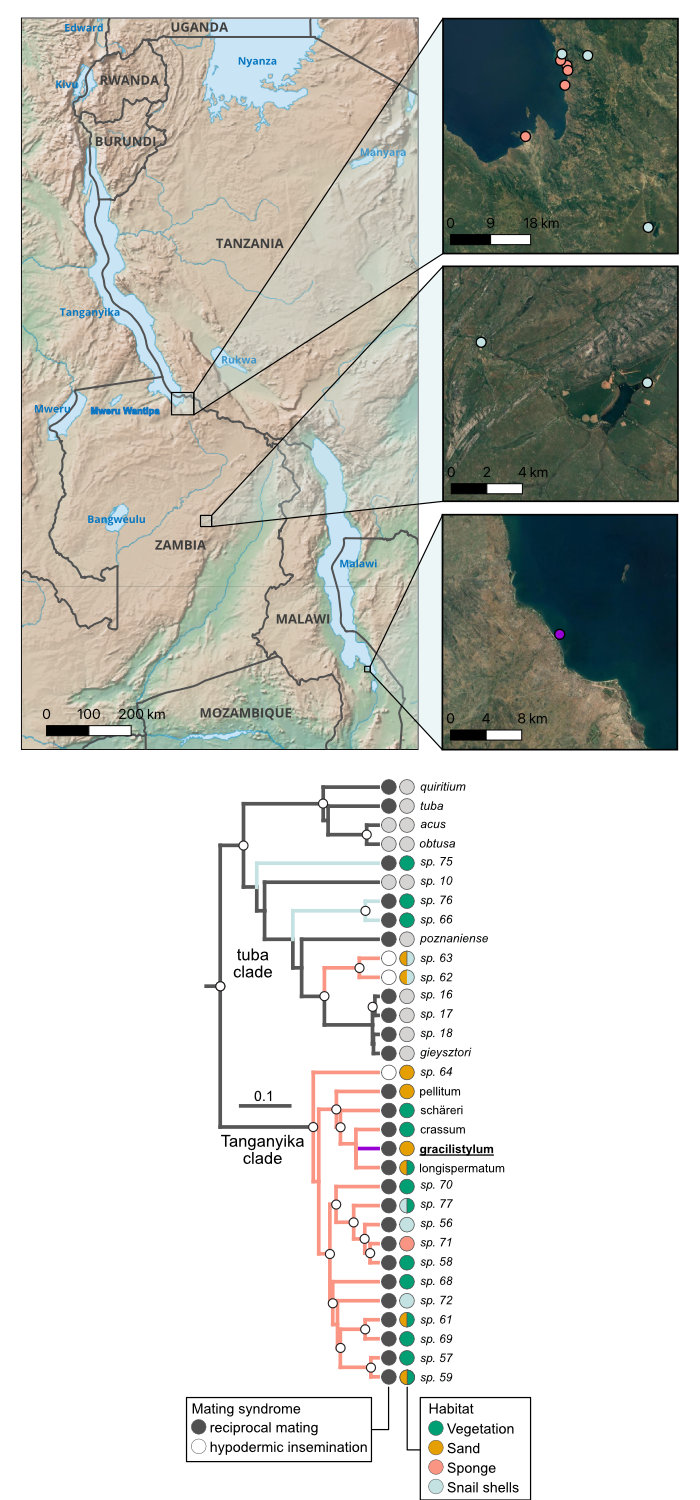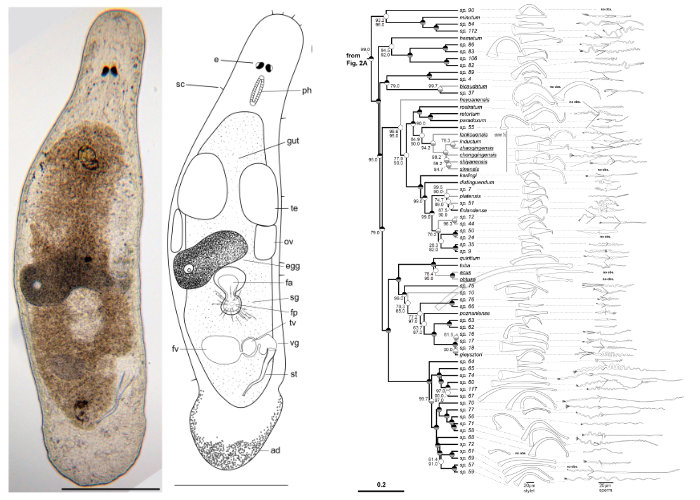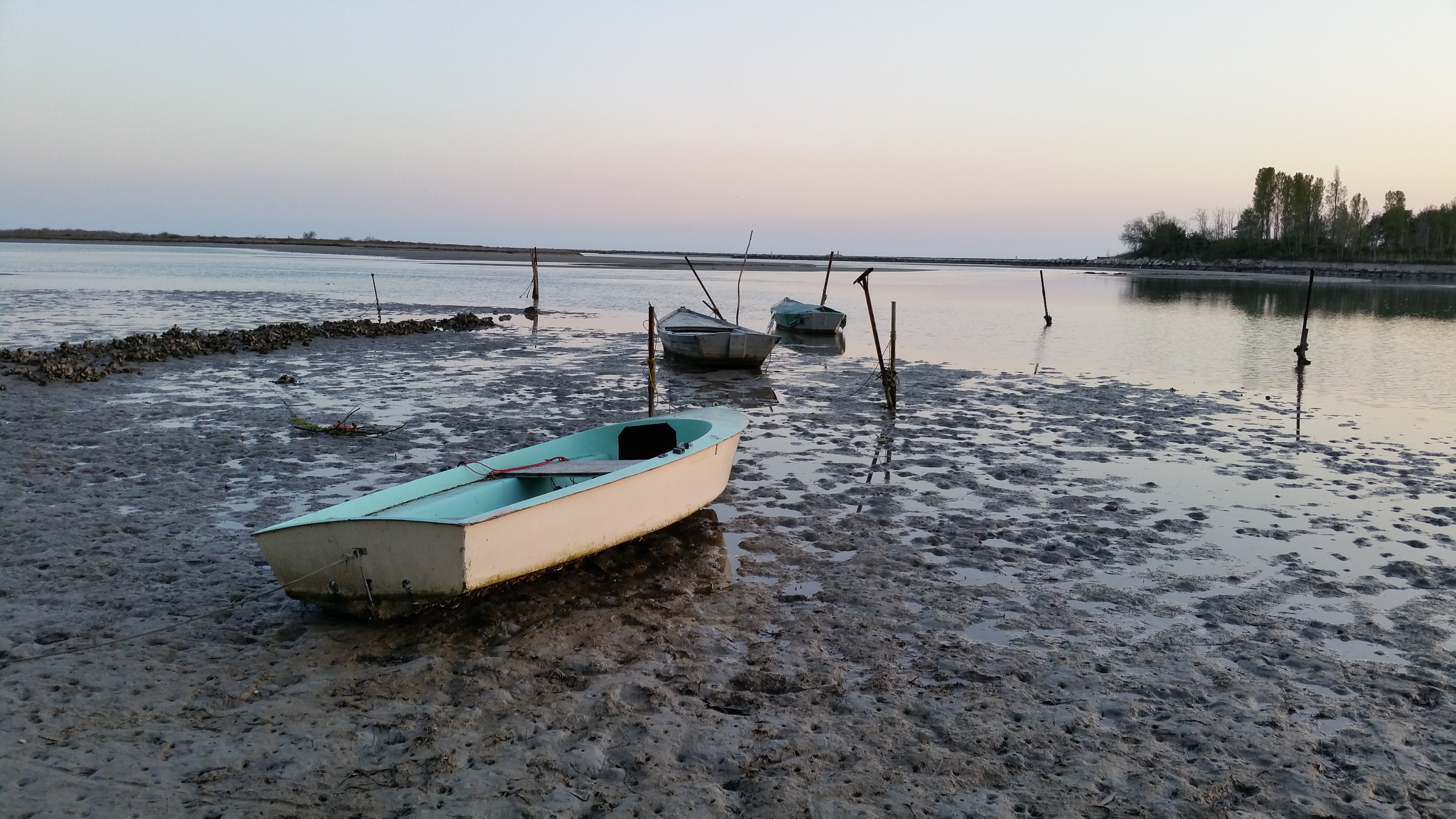Welcome to the Brand Group. We are an Ambizione research group at the University of Basel. We collaborate with the Salzburger Lab for field work in Zambia and Tanzania. Flatworms are our model systems to study how sexual reproduction shapes biodiversity. Currently, our main focus is the adaptive radiation of flatworms in East Africa.
If you are interested in doing a MSc with us get in touch via jeremias.brand@unibas.ch. Projects can be exclusively based in Basel or involve field work in East Africa, depending on interest. Currently, I do not have funding for a Postdoc position but I would be delighted to support any grant applications for a Postdocs to join the team.
Why do some lineages diversify while others do not?

Adaptive radiations, a process characterized by rapid speciation combined with the emergence of a high diversity of habitats and morphological adaptations, have long been recognized as a key driver of biodiversity. Many adaptive radiations occur when species colonize a new environment, such as an island or lake, leading to high ecological and morphological diversity. However, it is hard to predict if a specific lineages will give rise to an adaptive radiation. The mere presence of ecological opportunity is not sufficient since many species closely related to a radiating one do not radiate.
Among the best-studied adaptive radiations are the cichlid fishes in Lake Tanganyika, Lake Malawi, and Lake Victoria. Decades of study have revealed important drivers of these radiations. Other taxa have also diversified in these lakes but these radiations have received much less attention than the cichlids. Therefore, it is unclear whether the insights gained from the cichlid system can be generalized. During my PhD research we have found evidence suggesting that a radiation of Macrostomum flatworms has occurred in the region offerening an excellent opportunity to for such investigations.
In our current project funded by an SNFS Ambizione grant, we will systematically collect biogeographic, molecular, ecological, and morphological data to determine the extent, size, and drivers of the Macrostomum radiation. In particular, we will study the contribution of the extrinsic environmental factors and the species' inherent intrinsic factors, such as a species’ mating behaviour. I hypothesize that Macrostomum species, which mate via hypodermic insemination, a traumatic form of mating where sperm is injected through the epidermis of the partner, should have a low speciation rate due to the absence of antagonistic coevolution driving the emergence of precopulatory barriers and hence sympatric speciation. Previous work and preliminary data from Lake Tanganyika (see Figure) are consistent with this hypothesis, but incomplete taxon sampling has prevented firm conclusions. By focusing on a geographically restricted region, this project will be able to determine the relative importance of intrinsic or extrinsic factors for diversification. This groundbreaking effort will be the first investigation of an adaptive radiation in free-living flatworms and substantially contribute to answering why speciation occurs in general.
Macrostomum - an ideal model

Macrostomum flatworms are small aquatic animals with a global distribution. They occur in diverse habitats primarily in the spaces between sand grains, attached to aquatic vegetation, or even in wet moss. The worms are small (1-2mm) and highly transparent, allowing us to easily study their internal organs in vivo. Macrostomum are incredibly diverse in terms of reproductive morphology making them ideal models to study the importance of sexual selection. We also have extensive genetic resources for the genus, with transcriptomes available for >100 species and several species with high-quality genome assemblies. Finally, functional genetic investigations via RNA interference and genome editing are established and are routine.
Meiofauna Ecology

Meiofaunal organisms are important components of sediment ecosystems but we know very little about their ecology. We are using a combination of high-through put flouresecent imaging based morphometrics and stable isotope analysis to determine Macrostomum’s position in the food web and their adaptations to a life-style in sediment. In addition we will use population genetic approaches to determine the population structure of Macrostomum species to understand how much gene-flow occures along their range. Taken together this will yield insights about the ecology of microscopic animals.